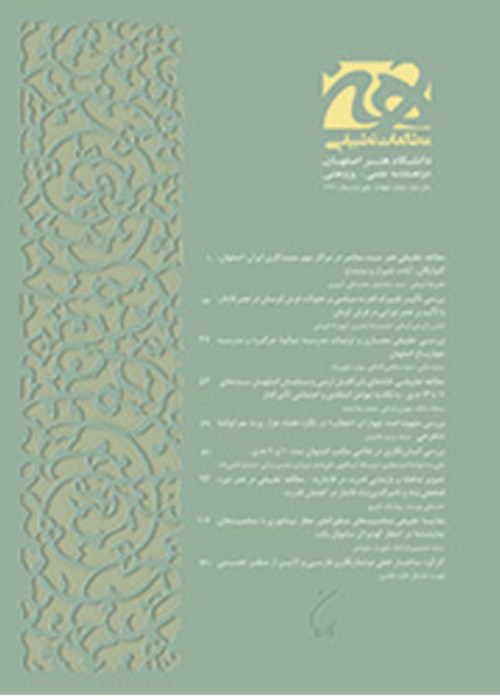Studying inscriptions and decorations of Zand and Qajar talismanic shirts preserved in Iranian museums
Victory garments or talismanic shirts, are a special kind of clothing and covering that all date back to the 9th AH/15th AD centuries. Their most prominent feature is the widespread use of sacred texts in the form of inscriptions and calligraphy. In addition to inscriptions, various motifs, symbols and amulets are also used in this garment. The production of these garments started from the Safavid period, in Iran, and continued in different forms during the Zand and Qajar eras. This study is descriptive-analytical and data have been collected based on library research and field studies. This investigation intends to answer the following question: What features do the Zand and Qajar talismanic shirts have regarding the visual structure and content? The main purpose of this article is to study the visual and content structure of the Zand and Qajar talismanic shirts which are available in domestic museums and analyzing and interpreting them based on the political, social and cultural conditions. By analyzing the Zand and Qajar talismanic shirts available in Iranian museums, it was found that the content of the inscriptions and the symbols used in the garments were related to each other. Their contents include a variety of sacred texts, symbols and magical square and each of them represents victory, overcoming enemies and protection against all kinds of disasters and shows that the main purpose of producing talismanic garments was probably to help win the battlefield. The political, social, and cultural conditions that had an effect on the Zand and Qajar era, and also factors such as: religion, legitimacy, and archaism are among the most influential factors affecting the available samples. Accordingly, in addition to using calligraphy as a dominant decorative means, the use of historic symbols is the most important shared aspect of these products and the major difference among them lies in the way the garments were designed, the amount of inscription used in comparison to design, and the way decorations were implemented.
Zand , Qajar art , Armor , Talismanic shirts , Inscription , Decoration
- حق عضویت دریافتی صرف حمایت از نشریات عضو و نگهداری، تکمیل و توسعه مگیران میشود.
- پرداخت حق اشتراک و دانلود مقالات اجازه بازنشر آن در سایر رسانههای چاپی و دیجیتال را به کاربر نمیدهد.



